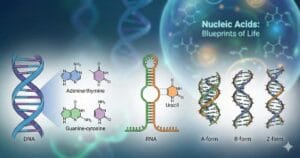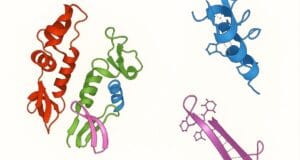
COMPETITIVE EXAM MCQs SERIES of ENVIRONMENTAL SCIENCE for UGC-NET/JRF, SLET, ARS, GATE, and other entrance tests – Statistical Significance and Confidence Limits.
Syllabus Outline
- Concept of statistical significance in hypothesis testing (e.g., p-values, Type I and Type II errors, and the interpretation of test results).
- Confidence intervals, margin of error, and levels of confidence.
- Parametric and non-parametric methods for assessing data reliability and variability.
This quiz contains concept-based, most frequently asked 25 MCQs of “Statistical Significance and Confidence Limits”. Each question has a single correct/most appropriate answer.
*****
1. In hypothesis testing, a p-value of 0.04 at α = 0.05 indicates:
A) Accept the null hypothesis
B) Fail to reject the null hypothesis
C) Reject the null hypothesis
D) Data are not significant
2. Which of the following statements is true?
I – Type I error is defined as: Rejecting a true null hypothesis
II – Type II error is defined as: Failing to reject a false null hypothesis
A) I Only
B) II Only
C) Both I and II
D) Neither I nor II
3. The significance level α represents:
A) Probability of making a Type I error
B) Probability of making a Type II error
C) The power of the test
D) The probability that H₀ is true
4. If a 95% CI for the difference between two means excludes 0, then at α = 0.05:
A) Fail to reject H₀: no significant difference
B) Reject H₀: significant difference exists
C) The true difference is negative
D) The p-value is greater than 0.05
5. For comparing two independent samples of non-normal environmental data, the appropriate test is:
A) Two-sample t-test
B) Mann-Whitney U test
C) Paired t-test
D) Chi-square test
6. Which correlation coefficient does NOT assume normality of the data?
A) Pearson correlation
B) Spearman correlation
C) Both Pearson and Spearman
D) Neither Pearson nor Spearman
7. Increasing the sample size (keeping other factors constant) will:
A) Increase the width of the confidence interval
B) Decrease the width of the confidence interval
C) Leave the confidence interval width unchanged
D) Decrease the confidence level
8. Increasing the confidence level from 95% to 99% (with the same data) will:
A) Narrow the confidence interval
B) Widen the confidence interval
C) Leave the confidence interval unchanged
D) Reduce the margin of error
9. Which of the following statements are true?
I – Increasing the sample size increases the power of a test.
II – Increasing α from 0.01 to 0.05 decreases the probability of a Type II error.
A) I only
B) II only
C) Both I and II
D) Neither I nor II
10. The margin of error for an estimated proportion depends on:
I – Sample size
II – Confidence level
A) I Only
B) II Only
C) Both I and II
D) Neither I nor II
11. Which action will decrease the risk of a Type II error?
A) Decrease the sample size
B) Increase the significance level
C) Increase the variance of the data
D) Decrease the effect size
12. Assertion (A): Committing a Type I error is generally considered more serious than a Type II error.
Reason (R): A Type I error leads to a false positive (concluding an effect when none exists), while a Type II error is a false negative.
A) Both A and R are true, and R is the correct explanation of A
B) Both A and R are true, but R is not the correct explanation of A.
C) A is true, R is false.
D) A is false, R is true.
13. Assertion (A): If a 95% confidence interval for a parameter excludes the null value, then the null hypothesis would be rejected at α = 0.05.
Reason (R): A 95% CI contains all parameter values that would not be rejected by a two-tailed test at α = 0.05.
A) Both A and R are true, and R is the correct explanation of A.
B) Both A and R are true, but R is not the correct explanation of A.
C) A is true, R is false.
D) A is false.
14. Which method can estimate a confidence interval without assuming normality?
A) Parametric z-interval
B) Parametric t-interval
C) Bootstrap resampling
D) Chi-square interval
15. Which statement about non-parametric tests is true?
A) They require the population to be normally distributed.
B) They make no assumptions about data distribution.
C) They are used only for binary data.
D) They always have higher power than parametric tests.
16. What is the advantage of a non-parametric confidence interval over a parametric interval?
A) It always yields a narrower interval.
B) It does not require the data to follow a specific distribution.
C) It does not depend on sample size.
D) It eliminates sampling error.
17. If the null hypothesis is false but we fail to reject it (p > α), what type of error has occurred?
A) Type I error
B) Type II error
C) No error (correct outcome)
D) Cannot determine
18. Which method is most robust for constructing a confidence interval when the data are heavily skewed?
A) Standard z-interval for the mean
B) t-interval for the mean
C) Bootstrap confidence interval for the median
D) ANOVA-based interval
19. Bootstrapping is a method for:
A) Performing a t-test when n is small
B) Computing confidence intervals by resampling
C) Testing differences between proportions
D) Estimating Bayes factors
20. Which criterion is most important for practical significance when a result is statistically significant?
A) The p-value alone
B) The confidence interval for the effect size
C) The sample size
D) The standard deviation
21. Which of the following statements about nonparametric confidence intervals is true?
A) They require no assumptions about the population distribution.
B) They always yield narrower intervals than parametric ones.
C) They use the t-distribution to account for small samples.
D) They can be computed by resampling methods.
22. If we conduct 100 independent studies with 5% significance testing, we expect about 5 of them to:
A) Correctly reject their true null hypotheses
B) Correctly fail to reject their false null hypotheses
C) Incorrectly reject a true null hypothesis (Type I errors)
D) Incorrectly fail to reject a false null hypothesis (Type II errors)
23. Assertion (A): A 90% confidence interval is always narrower than a 95% confidence interval given the same sample. Reason (R): A lower confidence level corresponds to a smaller critical value (z or t).
A) Both A and R are true, and R explains A.
B) Both A and R are true, but R is not the correct explanation of A.
C) A is true, R is false.
D) A is false.
24. Which of the following statements about parametric tests is TRUE?
They typically have greater statistical power than nonparametric tests when assumptions are met.
They assume specific distributions for the population.
III. They make no assumptions about population variance.
A) I and II only
B) II only
C) I and III only
D) I, II, and III
25. What is the advantage of bootstrapped confidence intervals in environmental studies?
A) They require fewer replications of an experiment.
B) They work well with small samples when normality is questionable.
C) They assume a normal distribution of the underlying data.
D) They guarantee narrower intervals than standard methods.
*****
Previous: Applied Statistical Distributions
Next: Approaches to the Development of Environmental Models
References
- Gupta, S.P. (2020) Statistical Methods, Sultan Chand & Sons, 44th edition.
- Barnett, V. (2004) Environmental Statistics: Methods and Applications, Wiley, 1st edition.
- Manly, B.F.J. (2008) Statistics for Environmental Science and Management, Chapman and Hall/CRC, 2nd edition.
- Odum, E. P. & Barrett, G. W. (2005) Fundamentals of Ecology, Cengage Learning India, 5th Edition.

